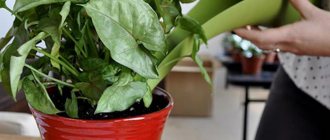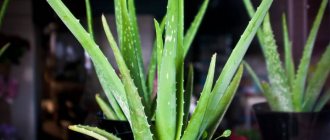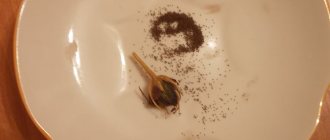Eustoma is a flower that looks like a rose, with delicate poppy petals. Maybe that's why it's called the Irish rose. The official name is lisianthus. The plant is an annual plant and reproduces only by seeds. It is grown infrequently in private plots, but in vain. Not everyone succeeds in growing full-fledged seedlings the first time, probably because few people know what conditions a flower needs for full development, and how to feed eustoma seedlings at home.
Eustoma: description
Eustoma is also called Irish rose or lisianthus, which means bitter flower in Latin. The plant belongs to the Gentian family. The flower is also called:
- texas bluebell (Texas bell);
- prairie gentian (prairie gentian);
- tulip gentian (tulip gentian)
- sometimes gentian (gentian).
Eustoma is common in the southern United States, often found in Mexico, and grows in the area of the Isthmus of Panama, in the northern part of South America and on some islands of the Caribbean Sea.
The eustoma rose grows up to 60 cm in height. Under natural conditions, the flowers of the plant are blue, and the bred varieties come in red, white and yellow shades.
The most common varieties are Eustoma grandiflora and Eustoma Russell. There is a type where these varieties are combined. Irish roses can be double or funnel-shaped. The leaves are glaucous and waxy. When the flower is partially half-open, it resembles a rose, and when it is fully open, it most closely resembles a poppy. The stems are strong, the stem begins to bush from the middle. Each plant resembles a bouquet and can produce up to 35 buds. Peduncles are long, suitable for cutting.
This flower is very popular in Europe and is characterized by high decorative properties. In Holland it is actively used in bouquets; in Poland it is one of the most expensive flowers. In the Netherlands it is among the 10 most popular. But eustoma is supplied for sale by African countries such as Tanzania and Kenya.
The flower is very popular when making bouquets, as it is highly resistant to wilting. Every year, breeders develop new varieties of eustoma, which not only have more advanced decorative properties, but also have a shorter growing season and bloom faster.
Eustoma alba is the most popular wedding flower. She was able to replace large varieties of cloves. Dwarf varieties are especially in demand.
Eustoma: reproduction
Lisianthus propagates by seeds, dividing the bush, layering and cuttings. But if you ask any experienced gardener which method of propagation he prefers, the answer will be only seeds. No one has yet managed to propagate eustoma in other ways, because the plant suffers any damage to the root system quite painfully.
Growing from seeds
When to plant eustoma seeds? This is the question asked by any gardener who has set out to grow such an amazing flower. If you want lisianthus to bloom in July and August, then the seeds are planted in February or March. Some gardeners plant eustoma in December. It is difficult to say how justified such early sowing of seeds is, because in central Russia there can be frosts until June, but this flower is afraid of the cold and needs to be planted in the ground when the danger of frost has passed and the earth has warmed up. In addition, in December there is still little natural color and additional lighting will be required to successfully grow eustoma seedlings.
Favorable days for planting eustoma
Let's start with the fact that this crop begins to bloom 6-7 months after germination. Many gardeners rely on the lunar calendar when planting crops. In their opinion, sowing on the right days ensures vigorous germination and strong seedlings.
The following numbers are considered the best days for planting eustoma according to the lunar calendar:
- January – 2, 3, 5, 7, 26, 28.
- February – 1, 2, 3, 4, 5, 26-28.
- March – 1, 2, 3 5, 7, 8, 26, 27, 28.
These are the days of the moon's growth. You cannot sow eustoma seeds on the days of the New Moon and Full Moon, just as you cannot sow seeds on the waning Moon. These days, eustoma seedlings will not grow as they should and this will affect its decorativeness.
Favorable days according to the Lunar calendar, of course, have a positive effect on plant growth, but caring for the flower and creating favorable conditions is no less important.
When to plant eustoma seeds
To answer this question, you should take into account that from the moment a flower is planted until it blooms, 20-26 weeks pass, which is about 6 months. Because of this, in order to get eustoma blooming in July or August, the flower should be sown in January. If you sow at a later date, the Irish rose will bloom closer to autumn. If the autumn is warm, it will please the eye until the frosts. In this case, it makes no sense to plant the plant in pots, and it will continue to bloom at home.
Sowing eustoma seeds for seedlings
Eustoma seeds are sown in several ways:
- classic, that is, in seedling boxes, containers, cups;
- into peat tablets;
Sowing eustoma seeds in the classical way
With this planting method, eustoma is sown in various seedling containers. It is best to immediately sow the seeds in separate cups, this way you can skip the process of picking the plant.
Attention!!!
Containers for seedlings must have drainage holes.
The soil is disinfected before filling the containers. It can be calcined in the oven or sprinkled with Maxim or Fitosporin preparations.
For preventive purposes, in order to prevent the appearance of “black leg” and other fungal diseases, a thin layer of calcined river sand, vermiculite and coconut substrate should be applied over the soil.
Eustoma seeds are very small and have a low germination rate. Out of 100 seeds, only 60 germinate. The seeds are not buried, but scattered on top of the soil and lightly pressed to the ground. You can also use a toothpick to plant seeds. The crops are covered with glass or plastic film. Every day for 20-30 minutes you should remove the glass from the container and ventilate the crops. The seedlings should be regularly sprayed with Fitosporin. In order for the seeds to hatch without problems, the temperature in the room must be at least 20°C.
How long does it take for eustoma to sprout? The first shoots will appear in two weeks. After 1.5 months, 2-3 true leaves will appear on them and then it will be possible to pick the plant.
Eustoma in peat tablets
Growing lisianthus in peat tablets is easier than in regular soil. After all, there is no need to prepare or purchase soil. All nutrients and growth stimulants are already added to the tablets, so the seeds germinate well and grow without problems. If you plant one seed in each tablet, then such seedlings will not need to be picked. The substrate here is also sterile and does not require additional disinfection.
The only “minus” is that peat tablets dry out quite quickly and you need to constantly monitor their humidity. In order to avoid the tablets from drying out, you need to add sand, perlite or vermiculite to the bottom of the tray.
The size of the pallet is determined based on the number and height of peat tablets, taking into account their increase. After decomposing the seeds into tablets, the tray is covered with plastic wrap and placed in a warm place for germination.
Attention!!!
Peat tablets should be prepared for planting according to the instructions; as a rule, purchased tablets are placed in a container into which warm water is gradually added. That is, as soon as the tablets have absorbed all the water, a new one is added and so on until the products absorb water. The tablets increase in height by 5 times, but their width remains the original. The liquid that is not absorbed is drained.
Soil for eustoma seedlings
To grow healthy eustoma seedlings, you must choose the right soil. It should be loose, light, not retain water and provide the roots with good aeration. Irish rose loves slightly alkaline soil. The soil for eustoma should have an acidity level of ph-6-7. A ready-made mixture for violets (Saintpaulia) is ideal for growing the plant.
Important points
The substrate with seedlings should be moistened with warm water, to which you can add “Fitosporin”. This is done even if the soil has been disinfected in advance.
The seeds of eustoma are small and therefore are not buried in the soil, but rather laid out on the surface of the soil. In order for the seedlings to sprout more or less evenly, they need to be planted with a toothpick dipped in water. After the seeds are spread on the earthen surface, they are carefully sprayed with a sprayer. The crops are covered with film and placed in a warm place. When shoots appear, add additional light. To stimulate crop growth, Zircon is used.
On a note!!!
Eustoma seeds begin to germinate in approximately 10-14 days, sometimes the process of seed germination extends to one month.
The optimal temperature for seed germination is +21…+23°C; at night it can drop to 16°C. You should not keep the plant at temperatures above 26 °C, otherwise the leaf part will grow and the flowering will be less lush.
The seedlings are illuminated for 12-14 hours, and the lamp should be located at a distance of 15-20 cm from the plants. It is recommended to use LED or phytolamps, as an incandescent lamp can burn the seedlings.
Every day, film or glass is removed from the crops to ventilate the crops, and the condensation is wiped off with a rag.
When growing eustoma seedlings, the soil should be moist, but not over-moistened or over-dried. When watering, you only need to wet the soil; this should be done in such a way that water does not fall on the seedlings. You can use a syringe for watering. Be sure to treat the plant with a fungicide once a week. You can use Fitosporin or potassium permanganate.
When cotyledon leaves appear, the film is removed from the plants. This should be done gradually, increasing the ventilation time daily.
The seedlings grow slowly and some may think that there are problems with the seedlings. But in fact, flowers are expanding their root system and are in no hurry to grow.
Feeding eustoma seedlings
At all stages, eustoma must be treated with growth stimulants, such as Epin, Zircon, HB-101, etc. The plant is sprayed with these drugs. The products help the seeds to hatch and stimulate their growth.
Feeding eustoma
The eustoma is fed for the first time 5-7 days after picking. For feeding, take a solution of calcium nitrate. Nitrogen contained in the fertilizer will have a beneficial effect on plant growth, and calcium reduces soil acidity, stimulates growth and strengthens roots.
According to the instructions, calcium nitrate should be diluted in a bucket of water. This amount is too much. Therefore, it is best to prepare a stock solution. It must be used to prepare the solution. To make a mother solution, take 1 tbsp. l. calcium nitrate without a slide and diluted in 1 liter of water. The solution is poured into an opaque bottle and stored in a dark place. For feeding, dilute 10 ml of concentrate in 0.5 liters of water.
Eustoma responds well to eggshell infusion. To prepare it, take the shells of 6 eggs, crush them and add a liter of water. Leave for 2-3 days and then feed the plants 2-3 times a month.
As soon as the seedlings begin to grow, the seedlings will need to be fed once every 7-10 days with any universal fertilizer. For seedlings, the dose recommended in the instructions is halved.
Picking eustoma
Eustoma seedlings are planted into separate cups when 3–4 true leaves appear. It is not advisable to delay picking. At such a young age, plants tolerate transplantation better. At an older age, plants take longer to adapt.
The substrate used for picking is the same as for sowing seeds - loose, with a low acidity level.
Plants must be planted very carefully, as plants do not tolerate damage to the root system. It would be more correct to say that plants do not need replanting, but transshipment - replanting without damaging the earth clod.
When picking, you need to ensure that the root collar of the seedlings after planting does not end up buried in the ground, but remains at soil level. If the root collar is exposed during watering, then you need to add soil.
Watering after picking, and then after another 10-14 days with a growth stimulator - “Zircon”, “NV-101” has a good effect. It is also advisable to periodically water young seedlings with a solution of Fitosporin to prevent fungal diseases.
For five days after picking, the plants need to be kept in a greenhouse while the root system takes root.
Pinching the eustoma
Eustoma seedlings, except for dwarf varieties, need to be pinched at the top to form a lush bush. Such plants look much more impressive; they bear many more buds than those plants that have not been pinched.
But we must remember that this procedure slows down growth for a month, and subsequently flowering. If sowing was done late, there is no point in pinching - the plant will bloom very late.
Pinching is carried out as the plants grow. The top of the plant is removed after the fourth pair of leaves.
Sowing seeds
You have to wait a long time for Eustoma to bloom, from 5 to 7 months, since its growing season is too long. Therefore, seeds begin to be sown from the beginning of December (flowering will begin in June), and sowing can be continued until January-February (flowering in July-August).
Eustoma's seeds are very small, but are almost always sold coated. The shell that covers the seeds contains nutrients, and such seeds no longer need to be processed; you can immediately begin planting.
If the seeds are collected manually, they should be pickled in a dark solution of potassium permanganate for 30 minutes or in an Epin solution (1 drop per 100 ml of water) for 6 hours. Next, the seeds should be dried and sown.
Before planting, the soil must be well watered. If you plant seeds in peat tablets, then first you need to prepare them: fill them with hot water, and then squeeze them out, removing excess moisture.
Eustoma seeds are sown superficially, never sprinkling soil on top. You can spray a little water from a spray bottle to destroy the protective shell of the seeds. After this, you need to place the container in a plastic bag to create a better microclimate.
Planting eustoma in open ground
Eustoma in the garden is not so difficult to care for. But certain conditions must be observed, otherwise the crop will begin to wither and become sick.
It is best to plant eustoma in open ground in early June, when the plant has formed 4-6 pairs of true leaves, that is, about 8-12. During this period of time, the earth is sufficiently warmed up, the probability of frost is almost zero. For landing, the air temperature must be at least 20°C during the day and at least 10°C at night. Moreover, by this period of time the seedlings become quite strong and grow well in open areas. Eustoma blooms 3-4 months after germination.
Lisianthus is planted with transshipment meth. The plant is removed from the container along with a lump of earth and planted in a pre-prepared hole, the depth of which should be exactly the same as in the container for seedlings. The plant is planted at a distance of 20-30 cm from each other.
Selecting a location
The place for planting eustoma should have good lighting. It is here that the Irish rose is able to show itself in all its glory. But it is still better to plant the flower in a place where the rays of the midday sun do not fall on it. Partial shade for this flower is ideal. Lisianthus is not planted under a roof, since drops of rainwater dripping from the roof can injure the too fragile stems and leaves of the plant.
Important!!!
Eustoma does not tolerate drafts. It is better to select closed areas on the western side.
Soil for eustoma
The soil of an adult eustoma, as well as for seedlings, should be loose and moisture-absorbing. So that water does not stagnate in the hole. Must be fertile. Before planting, mineral fertilizer should be added to the soil. Nitrophoska or humus is quite suitable . Eustoma loves neutral soil , the acidity of which ranges from 6.0-7.0 pH. If the soil is more acidic, the flowering of the plant will slow down. With such soil, dolomite flour or wood ash is added to the soil.
How to propagate eustoma?
Eustoma does not reproduce well by dividing the bush; its root system is not strong enough for this. The resulting divisions most often die. It also works very rarely with cuttings.
That is why the most reliable way to propagate eustoma is through seeds. This plant blooms only 20 weeks after the first shoots appear. In order to enjoy this wonderful moment for as long as possible, eustoma should be planted as early as possible. December-January is the best time to sow eustoma. If you are late until February, you will see the first buds only under the snow.
Caring for eustoma in the garden
When planting eustoma in the garden, caring for the flower comes down to regular watering, loosening and weeding. The plant should also be fed periodically.
Watering and loosening
Eustoma should be watered regularly. Drying out the soil negatively affects the decorative properties of the plant. The buds will fall off and new ones will stop forming. You shouldn't overwater the flower. Measurement is good here. The crop is watered as the earthen clod dries out. Watering should be done carefully so that water does not get on the leaves of the plant.
If after watering a hard crust forms on the ground, then the ground should be loosened or mulched. Bark, straw, dry hay, etc. are suitable for mulching.
Top dressing
Eustoma should be fed every two weeks. The flower especially needs feeding during the flowering period. The fertilizer should contain a high percentage of potassium and phosphorus. Moreover, the potassium content should prevail. Feeding with such fertilizer will create conditions for long and abundant flowering of the plant.
Potash fertilizers are divided into:
- mineral (potassium sulfate, potassium magnesium, potassium monophosphate);
- organic (wood ash).
Other events
If the eustoma bush has grown large enough, then the plant should be tied up. The support must match the height of the flower. If you do not tie up a flower in time, it may collapse under the weight of its buds.
In order for eustoma to bloom for a long time, it should not only be fed, but also wilted flowers should be removed in time. This way the plant will not waste extra energy on ripening the seeds.
A cocktail of stimulants
The product cannot be given simultaneously with fertilizing - the load on the tiny seedling is too great. You need to “separate” them for at least 3 days. But then you can water the seedlings once every 2 weeks . For grown eustoma, go through the leaves through a fine strainer.
Compound
The cocktail includes two stimulants. Energen Extra is based on sodium humate. It gives seedlings energy for growth, accelerates development, and protects against adverse factors.
HB 101 contains extracts of plantain and long-lived conifers. Activates the immune system of eustoma seedlings, stimulates growth processes.
Recipe
Add an Energen Extra capsule and 1 drop of HB 101 to a liter of settled water. Stir and use the working solution immediately. It is stored for up to 2-3 hours, but gradually loses its beneficial properties.
Eustoma: diseases and pests
Lisianthus is often affected by spider mites, aphids, scale insects and slugs. To combat insects, the plant is treated with chemicals. Aktara and Fitoferm preparations showed good results in pest control. Slugs should be collected by hand.
Eustoma can suffer from powdery mildew, gray mold and fusarium. If the plant is affected by one of the above diseases, then it should be treated with foundationazole. It is recommended to burn severely affected parts of the plant.
Eustoma diseases
To prevent pests from bothering the crop too much, you can prepare a repellent liquid. To do this, mince the garlic through a meat grinder, add powdered hot red pepper and powdered mustard. All components are taken in a ratio of 1:1:1. The dry mixture is filled with water and infused for a week. The bushes of the plant are generously sprayed with this solution. Such treatment is carried out in the evening or in cloudy weather, since the hot components of the mixture under the influence of the sun can severely burn the plant.
Types and varieties of eustoma
Currently, about 60 varieties of eustoma are known. It is customary to grow Russell's eustoma at home. A variety with large flowers is suitable for open ground. There are flower growers who grow both varieties in the garden. And it does not make distinctions between eustoma varieties. Types of Irish rose differ from each other in height, color, flower shape, as well as the duration of flowering.
The most popular varieties of tall eustoma are listed below:
- Aurora. The flower has blue, white, light blue or pink buds and is distinguished by early flowering.
- Echo. It grows up to 70 cm, has spreading stems and large buds. There are 11 color varieties of this variety grown.
- Heidi. Reaches a height of 90 cm, characterized by frequent flowering. The variety has 15 color varieties.
- Flamenco. The tallest and most picky variety, which can reach 90-120 cm. Large flowers have many shades.
The following varieties are suitable for planting eustoma at home:
- Mermaid. A low branched plant, stems 12-15 cm long, small flowers can be white, blue, pink or purple.
- Little Bell. Reaches a height of 15 cm and does not need clothespins, has simple funnel-shaped cups of various shades.
- Eustoma Fidelity. A white flower up to 20 cm high, on which numerous simple buds are arranged in a spiral.
- FloridaPink. A variety that has pink flowers that form a bouquet of regular shape.
Lisianthus is one of the most beautiful garden flowers and if grown correctly, it will not only not create unnecessary difficulties, but will be pleasing to the eye.











